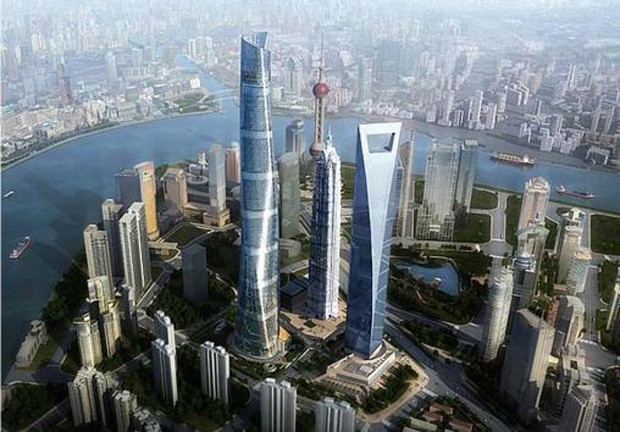A crane has placed the final steel beam into place at the world’s second-tallest building, the Shanghai Tower, designed by global architectural firm Gensler.
The glass and steel, 123-storey tower stands at 623 metres and is second only to Dubai’s 828 metre tall Burj Khalifa. It joins the Shanghai World Centre and the Jin Mao Tower as a trio of super-tall buildings at the heart of the city’s financial district.
The estimated $2.2 billion building will feature a double-skinned façade which rotates to give a curved appearance. Its taper, texture and asymmetry work together to reduce wind load on the building, while a transparent design maximises natural light and establishes a visual connection between the tower and the city.
The tower will boast on-site wind turbines near its top which will generate some of its energy, and a natural gas fired cogeneration system to provide electricity and heating to the lower floors.
The project uses 25 per cent less structural steel than conventional designs, saving approximately $58 million in construction costs.

Shanghai Tower. Gensler/Artist's concept.
Gensler is aiming for a LEED Gold certification from the US Green Building Council as well as a China Green Building Three Star rating, and says sustainability measures will deliver savings to the tune of 34,000 metric tonnes in carbon emissions per year.
"It's a landmark and it will change the skyline of Shanghai," said Xia Jun of Gensler on Saturday, following the "topping out" ceremony.
Construction of the tower started at the end of 2008, and was performed using a slip form process under which the tower’s steel-reinforced concrete core was built floor by floor. It will be completed in 2014, by which time it may have been surpassed as the tallest building in China by Sky City, which will stand at 838 metres tall and is expected to be completed in April next year.

